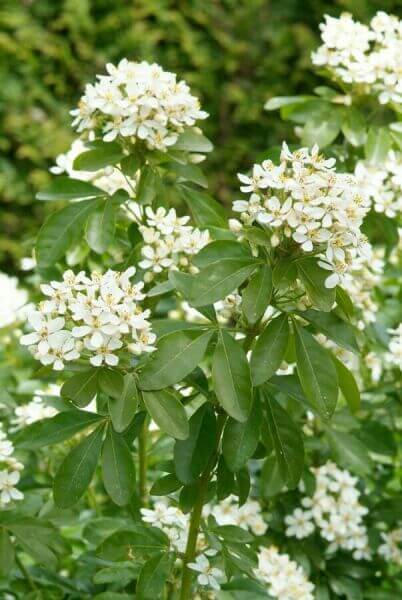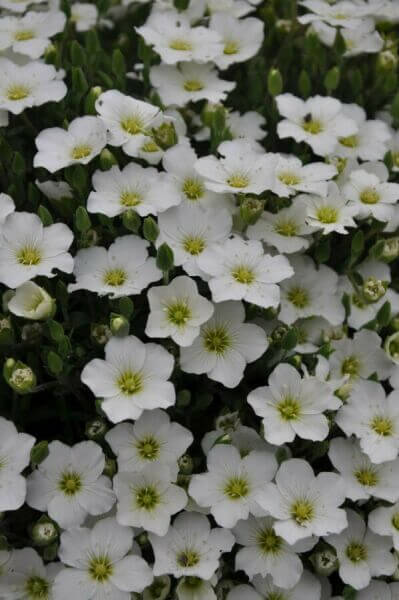Hedging Plants For Attractive Borders
Hedging Plants For Attractive Borders
Blog Article
Hedge Plants For Protecting Gardens
Boost your garden's attraction with rich hedge ranges such as Yew (Taxus), Thuja, Laurel, Photinia, and Bamboo, celebrated for their structural stability and ecological advantages.
Yew and Thuja offer evergreen protection and winter durability, while Laurel uses rapid development and broad, aromatic leaves.
Photinia adds seasonal beauty with its lively red foliage, and Bamboo lends a low-maintenance, tranquil atmosphere.
These hedges improve air quality, minimize sound, and create tranquil, private areas.
Correct planting, spacing, and maintenance make sure vigorous growth and ecological consistency.
Check out how these lush ranges can elevate your garden's beauty and wellness.
Key Takeaways
Transform Your Garden With Lush Hedge Varieties
- Select Yew for its thick, evergreen growth and unequaled longevity.
- Go with Laurel for its quick growth and broad leaves, guaranteeing fast privacy.
- Choose Photinia for its vibrant seasonal foliage, which turns a striking dark red.
- Use Bamboo for a low-maintenance, winter-hardy hedge with aesthetic appeal.
- Area plants 2-3 per meter and prune routinely for ideal development and health.
Popular Hedge Plants
When changing a garden with rich hedge ranges, it's important to think about popular hedge plants such as Yew, Thuja, Laurel, and Photinia due to their unique qualities and advantages.
Yew (Taxus) is extremely respected for its durability and thick, green development, making it a prime choice for enduring landscapes.
Thuja is noted for its evergreen foliage and robust winter resilience.
Photinia includes seasonal vibrancy with red leaves that darken with time, developing vibrant visual appeal.
Laurel uses fast growth and fragrant, broad leaves, ideal for quick personal privacy.
In Addition, Bamboo is an excellent option for atmosphere, providing a low-maintenance, winter-hardy choice that improves the garden's visual with its classy, swaying walking canes.
These selections cater to a range of horticultural requirements and preferences.
Benefits of Garden Hedges
Garden hedges use a wide variety of advantages, making them an important addition to any landscape. These natural barriers are cost-efficient to execute and provide substantial wind defense, improving air circulation and adding to noise decrease. The thick foliage of hedges like Thuja and Beech guarantees privacy by blocking visibility, developing a secluded and serene environment.
Hedges also play an essential function in microclimate guideline, providing a steady environment that cultivates plant growth and decreases temperature variations. Their elaborate leaf structures filter toxins, improving air quality and adding to a healthier garden community.
Moreover, hedges master noise decrease, taking in and deflecting acoustic waves to lower ambient noise levels. This double performance of providing both acoustic and visual privacy improves the total serenity and visual appeal of any garden.
Planting and Maintenance Tips
For an effective hedge, careful preparation of the planting area is important. Make sure the soil has proper pH and drain to support strong root advancement.
Area the plants appropriately for the selected types. Water the hedge frequently during its preliminary development phase, adjusting as required with seasonal modifications.
Carry out a systematic insect control and illness avoidance method, using chemical or organic treatments when required. Frequently inspect for aphids, termites, and fungal infections.
Apply mulch to retain moisture and reduce weeds. Seasonal pruning promotes dense development and air blood circulation, vital for plant health.
Following these standards will help you cultivate a lively, properly maintained hedge that enhances the charm of your garden.
Spacing and Cutting Guidelines
Spacing and Trimming Guidelines
Correct spacing and trimming are important for cultivating healthy, visually appealing hedges. Appropriate spacing ensures each plant receives sufficient nutrients, light, and airflow.
Follow these guidelines for optimum hedge upkeep:
- Spacing: Position hedge plants 2-3 plants per meter to encourage robust growth.
- Pruning Methods: Regular pruning is necessary for keeping wanted hedge height and shape. Cut brand-new development in summertime and cut back older wood during winter.
- Seasonal Care: Change cutting schedules and approaches according to seasonal requirements to make sure plant health.
- Hedge Height: Routinely screen and trim to maintain the wanted hedge height and attain consistent visual appeals.
Adhering to these actions will guarantee your hedge thrives, improving both the appeal and functionality of your garden.
Choosing the Right Hedge
Picking the Right Hedge
Choosing the appropriate hedge includes assessing factors such as fully grown height, foliage density, and ecological resilience. Effective hedge plant choice requires understanding each types' growth attributes and site-specific versatility.
For example, Yew (Taxus) uses outstanding durability and dense development, while Thuja is noteworthy for its winter season durability. Additionally, thinking about maintenance requirements is important; fast-growing species like Laurel or Privet need routine trimming, whereas low-maintenance alternatives like Bamboo or Ivy might be preferable for those seeking very little upkeep.
Ecological factors such as soil type, light schedule, and moisture conditions need to also direct the choice process. This mindful approach guarantees the picked hedges will flourish, supplying both aesthetic and functional benefits to the garden landscape.
Shipment and Planting Advice
To ensure your hedge plants prosper, they need to be delivered by specialized couriers and planted without delay upon arrival.
Follow these important steps for effective planting:
- Soil Preparation: Improve the soil with organic matter to improve drainage and nutrient material.
- Planting Depth: Develop a trench two times the width and equal to the depth of the root ball.
- Watering Techniques: Water thoroughly after planting, keeping the soil regularly damp however not filled.
- Mulching: Use a layer of mulch to retain wetness and reduce weeds.
Consumer Assistance and Service
Given the crucial function of prompt assistance in horticultural pursuits, our customer support team is offered 6 days a week through telephone, e-mail, and social networks to provide skilled suggestions and swiftly attend to any concerns. Their commitment to quick reaction times makes sure consumer satisfaction by dealing with inquiries associated with plant health, optimal planting methods, and maintenance schedules.

Reaction Time
-----------------
Within 24 hr
Social network
This thorough support system, reinforced by an outstanding 9.3/ 10 client score, highlights our dedication to boosting the gardening experience for each customer.
Regularly Asked Concerns
The Length Of Time Does It Consider Hedge Plants to Develop?
Hedge plants generally require one to three years to end up being totally developed, with the specific period differing by types and growing conditions.
Reliable care throughout this vital duration is necessary for robust development. Constant watering, watchful weed control, and proper fertilizer application are critical in promoting strong root advancement.
For example, fast-growing types like Laurel might develop quicker, while slower-growing ranges such as Yew may take longer. Diligent maintenance speeds up the facility process, resulting in healthy and dense hedges.
What Are the very best Hedge Plants for Privacy?
The question of the very best hedge plants for privacy involves examining evergreen and deciduous alternatives.
Evergreen hedges like Thuja, Laurel, and Cypress supply year-round protection, ensuring constant privacy.
On the other hand, deciduous hedges such as Beech offer seasonal personal privacy, shedding leaves in cooler months.
Key upkeep tips for personal privacy hedges include regular cutting, fertilizing in spring, and correct spacing-- normally 2 to 3 plants per meter.
Furthermore, consistent watering and diligent weed removal are important for promoting healthy, thick development.
Can Hedge Plants Draw In Wildlife to My Garden?
Yes, hedge plants can attract wildlife to your garden by supplying important advantages like shelter, food, and nesting sites, thereby boosting regional biodiversity. Yew, holly, and laurel are exceptional for attracting birds, while ivy supports a range of pests.
However, it's essential to note that there are some disadvantages, such as increased upkeep to manage pests and routine maintenance. Carefully choosing and maintaining hedge ranges can assist balance these advantages and downsides, ultimately cultivating a lively and sustainable ecosystem in your garden.
Exist Any Flowering Hedge Plants Available?
Yes, there are flowering hedge plants readily available that can improve the beauty of your garden.
For instance, Elaeagnus, also called Olive Willow, produces aromatic white flowers in the fall, including a touch of beauty.
Photinia, another popular option, showcases dynamic red leaves that grow into a rich green, creating a vibrant visual effect throughout the seasons.
To guarantee these plants thrive, it's vital to practice proper pruning strategies and seasonal maintenance, such as cutting brand-new growth in the summer season and cutting back in the winter season.
These measures will assist maintain the health and aesthetic appeal of your blooming hedges.
How Do I Avoid Pests in My Hedge Plants?
To avoid bugs in hedge plants, employ natural insect control methods and preserve correct hedge care. Present useful insects like ladybugs, which take advantage of damaging pests, to produce a well balanced environment.
Regularly inspect your hedges for Additional resources indications of problem and quickly eliminate any afflicted parts to avoid the spread. Make sure the health of your hedges by using well balanced fertilizers and supplying appropriate water.
Utilize mulching to retain soil wetness and correct spacing to reduce plant stress and promote robust growth. These practices collectively assist in minimizing pest issues and maintaining a healthy hedge.
Conclusion
In essence, choosing the right hedge varieties such as Yew, Thuja, and Laurel can transform any garden into a tranquil haven. These plants provide year-round plant, boost visual appeal, and deal practical benefits like noise decrease and wind defense.
Appropriate planting methods, accurate spacing, constant watering, and seasonal cutting are crucial for optimal growth.
Reputable delivery services and skilled consumer assistance guarantee a seamless experience from purchase to planting, making it easier than ever to raise your outside area.
Garden hedges provide a wide range of benefits, making them a valuable addition to any landscape. These natural barriers are cost-efficient to execute and provide substantial wind security, enhancing air blood circulation and contributing to sound reduction. The thick foliage of hedges like Thuja and Beech ensures personal privacy by obstructing presence, creating a serene and secluded environment.

Pruning Techniques: Regular pruning is essential for maintaining wanted hedge height and shape. Cut brand-new growth in summer and cut back older wood during winter season.
Report this page